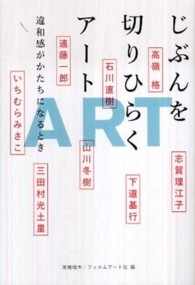Full Description
From 1880 to 1920, the first truly national visual culture developed in the United States as a result of the completion of the Pacific Railroad. Women, especially young and beautiful ones, found new lives shaped by their participation in that visual culture. This rapidly evolving age left behind the "cult of domesticity" that reigned in the nineteenth century to give rise to new "types" of women based on a single feature--a type of hair, skin, dress, or prop--including the Gibson Girl, the sob sister, the stunt girl, the hoochy-coochy dancer, and the bearded lady. Exploring both high and low culture, from the circus and film to newspapers and magazines, this work examines depictions of women at the dawn of "mass media," depictions that would remain influential throughout the twentieth century.
Contents
Table of Contents
Acknowledgments viii
Preface
1. Public Women, Public Depictions
2. Woman as Child, Child as Woman
3. The Gibson Girl
4. The Stunt Girl
5. The (Comedic) Victim of Violence: The Constantly Imperiled Pauline
6. Evil Lone Dancers: The Salomé and Her Sisters
7. Women on Scientific Display: Natives, Oddities, and Grotesqueries
8. A Modern Amalgam: The Political Woman
Conclusion
Works Cited
Index







